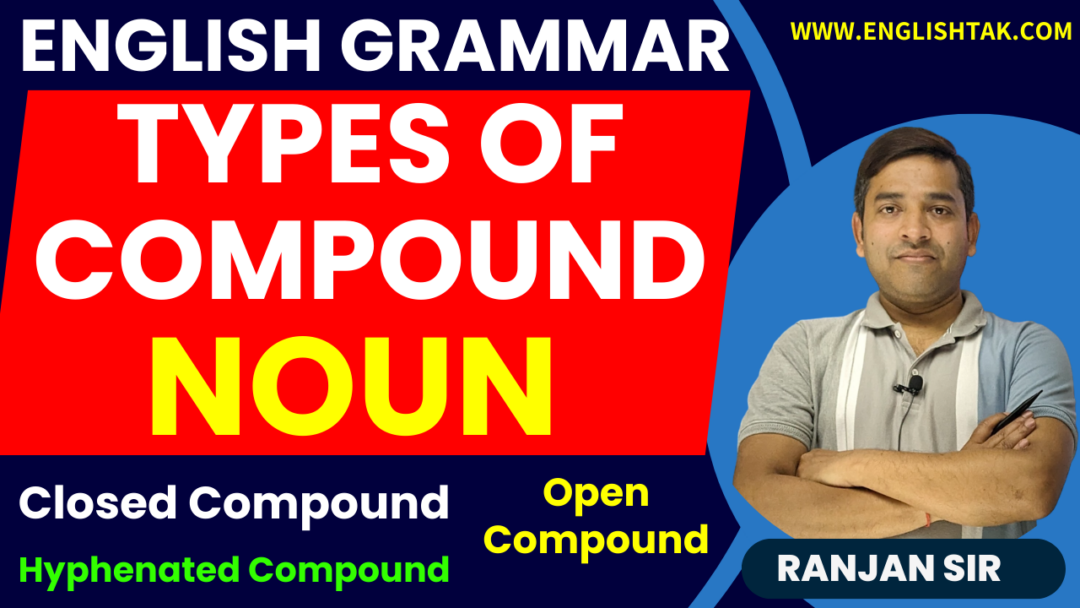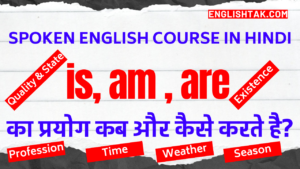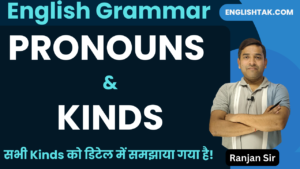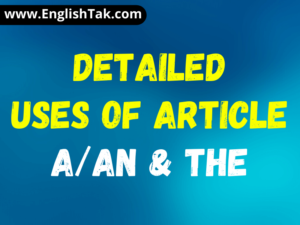![]()
Types of Compound Nouns in English Grammar
Table of Contents
Types of Compound Nouns in English Grammar – Compound nouns in English grammar are nouns made up of two or more words that function as a single unit to name a person, place, thing, or idea. They are formed by combining different parts of speech, such as nouns, verbs, or adjectives. Understanding the types of compound nouns is essential for mastering their use in sentences. Here’s a detailed breakdown:
Types of Compound Nouns
1. Closed (Solid) Compound Nouns – Words are written together without spaces or hyphens.
Examples:
Toothpaste (tooth + paste)
Notebook (note + book)
Sunlight (sun + light)
Bedroom (bed + room)
Firefighter (fire + fighter)
Haircut (hair + cut)
Butterfly (butter + fly)
Snowflake (snow + flake)
These are usually shorter and have become conventionalized through frequent usage.
2. Hyphenated Compound Nouns – Words are connected by a hyphen.
Examples:
Mother-in-law
Editor-in-chief
Six-pack
Runner-up
Well-being
Son-in-law
Passer-by
Check-up
Often used when the combination of words could otherwise be confusing or ambiguous. Hyphenation may vary depending on style guides like APA or MLA.
3. Open (Spaced) Compound Nouns – Words are written separately but function as a single noun.
Examples:
Post office
Full moon
Living room
High school
Bus stop
Coffee table
Police station
Ice cream
These combinations are treated as a single unit in terms of meaning and usage.
Formation of Compound Nouns – Types of Compound Nouns in English Grammar
Compound nouns are formed by combining words from different parts of speech. Here are the common combinations:
1. Noun + Noun – Two nouns combine to form a single noun.
Examples:
Football (foot + ball)
Bus stop (bus + stop)
Bedroom (bed + room)
Notebook (note + book)
Doghouse (dog + house)
Bookstore (book + store)
Treehouse (tree + house)
2. Adjective + Noun – An adjective modifies a noun to create a compound noun.
Examples:
Blackboard (black + board)
Full moon (full + moon)
Whiteboard (white + board)
Greenhouse (green + house)
Blueberry (blue + berry)
Yellowstone (yellow + stone)
3. Verb + Noun – A verb and a noun combine to create a compound noun.
Examples:
Washing machine (washing + machine)
Swimming pool (swimming + pool)
Driving license (driving + license)
Frying pan (frying + pan)
Walking stick (walking + stick)
Parking lot (parking + lot)
4. Noun + Verb – A noun and a verb form a compound noun.
Examples:
Haircut (hair + cut)
Rainfall (rain + fall)
Sunrise (sun + rise)
Snowfall (snow + fall)
Heartbeat (heart + beat)
Nightfall (night + fall)
5. Verb + Preposition – A verb and a preposition combine to form a noun.
Examples:
Check-in (check + in)
Take-off (take + off)
Breakdown (break + down)
Hangout (hang + out)
Makeup (make + up)
6. Preposition + Noun – A preposition followed by a noun creates a compound noun.
Examples:
Underground (under + ground)
Overpass (over + pass)
Underworld (under + world)
Afterlife (after + life)
Uptown (up + town)
Outfield (out + field)
7. Adjective + Verb – Less common, but an adjective and verb can form a compound noun.
Examples:
Dry-cleaning (dry + cleaning)
High-jump (high + jump)
Fast-forward (fast + forward)
Easy-going (easy + going)
8. Preposition + Verb – A preposition followed by a verb.
Examples:
Input (in + put)
Outbreak (out + break)
Override (over + ride)
Underestimate (under + estimate)
Pluralization of Compound Nouns
The plural form of compound nouns depends on the structure:
1. Closed Compound Nouns: Add -s to the end.
Examples:
Toothpaste → Toothpastes
Notebook → Notebooks
Bedroom → Bedrooms
Butterfly → Butterflies
2. Hyphenated Compound Nouns: Pluralize the principal word.
Examples:
Mother-in-law → Mothers-in-law
Editor-in-chief → Editors-in-chief
Runner-up → Runners-up
Passer-by → Passers-by
3. Open Compound Nouns: Add -s to the main noun.
Examples:
Post office → Post offices
Living room → Living rooms
Bus stop → Bus stops
Police station → Police stations
Tips for Identifying Compound Nouns
1. Stress Patterns: In compound nouns, the stress is usually on the first part of the word.
GREENhouse (compound noun) vs. green HOUSE (adjective + noun).
2. Single Meaning: Compound nouns express a single idea, even if the components are separate words.
Police station refers to one specific place.
English Grammar in Hindi
Past Perfect Tense Translation Exercise: 100 Sentences
Past Continuous Tense Translation Exercise: 100 Sentences
Past Perfect Continuous Tense Translation Exercise: 100 Sentences
Present Continuous Tense Translation Exercise: 100 Sentences
Present Perfect Tense Translation Exercise: 100 Sentences
Present Perfect Continuous Tense Translation Exercise
Simple Past Tense Translation Exercise: 100 Sentences
Simple Present Tense Translation Exercise: 100 Sentences
Use of Could in Hindi – Simple Rules & Examples





